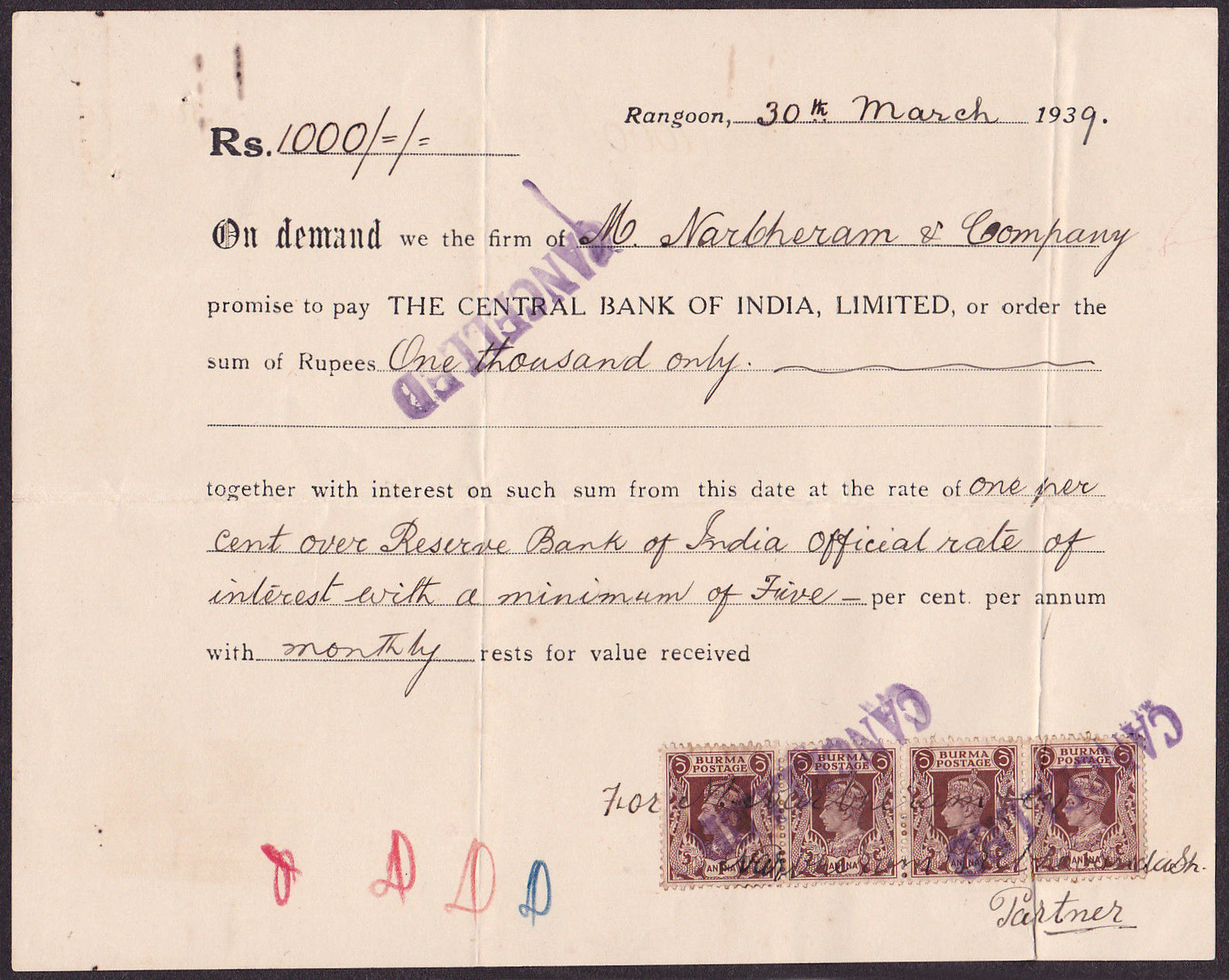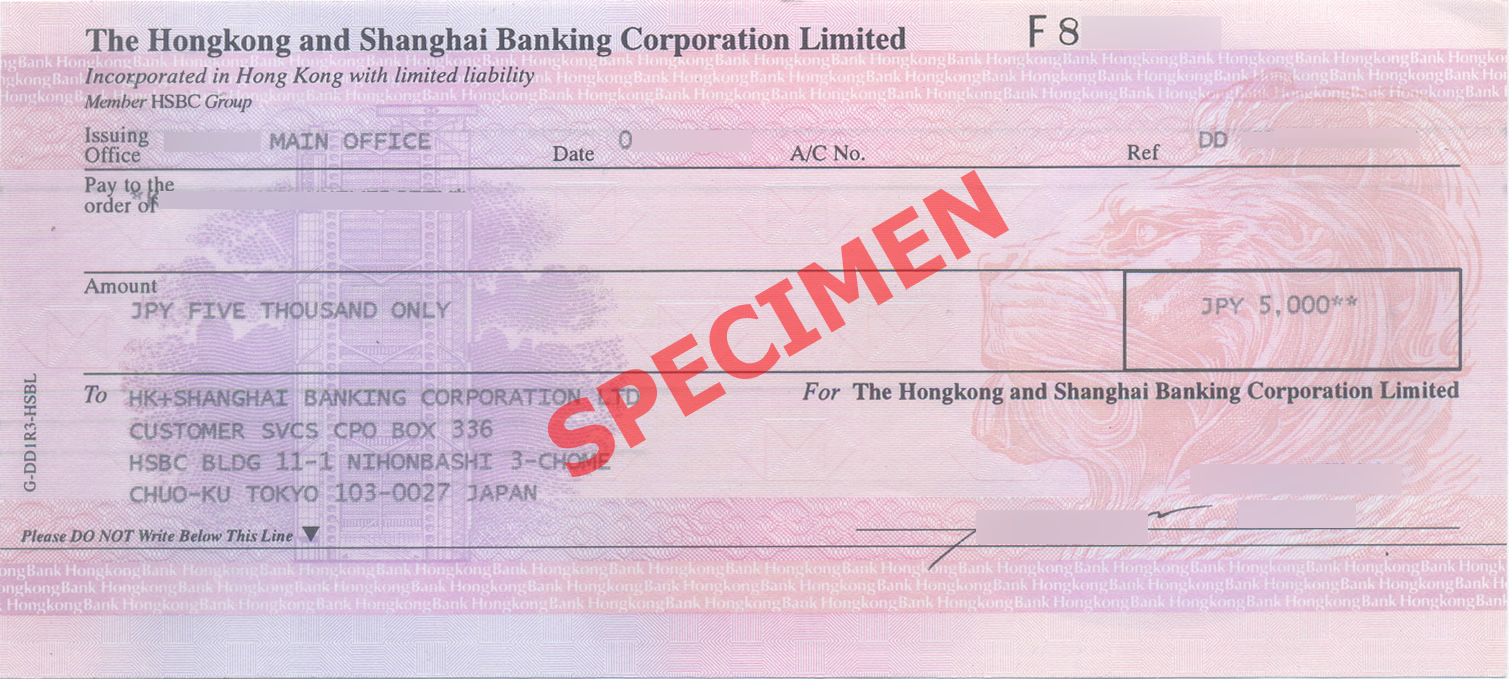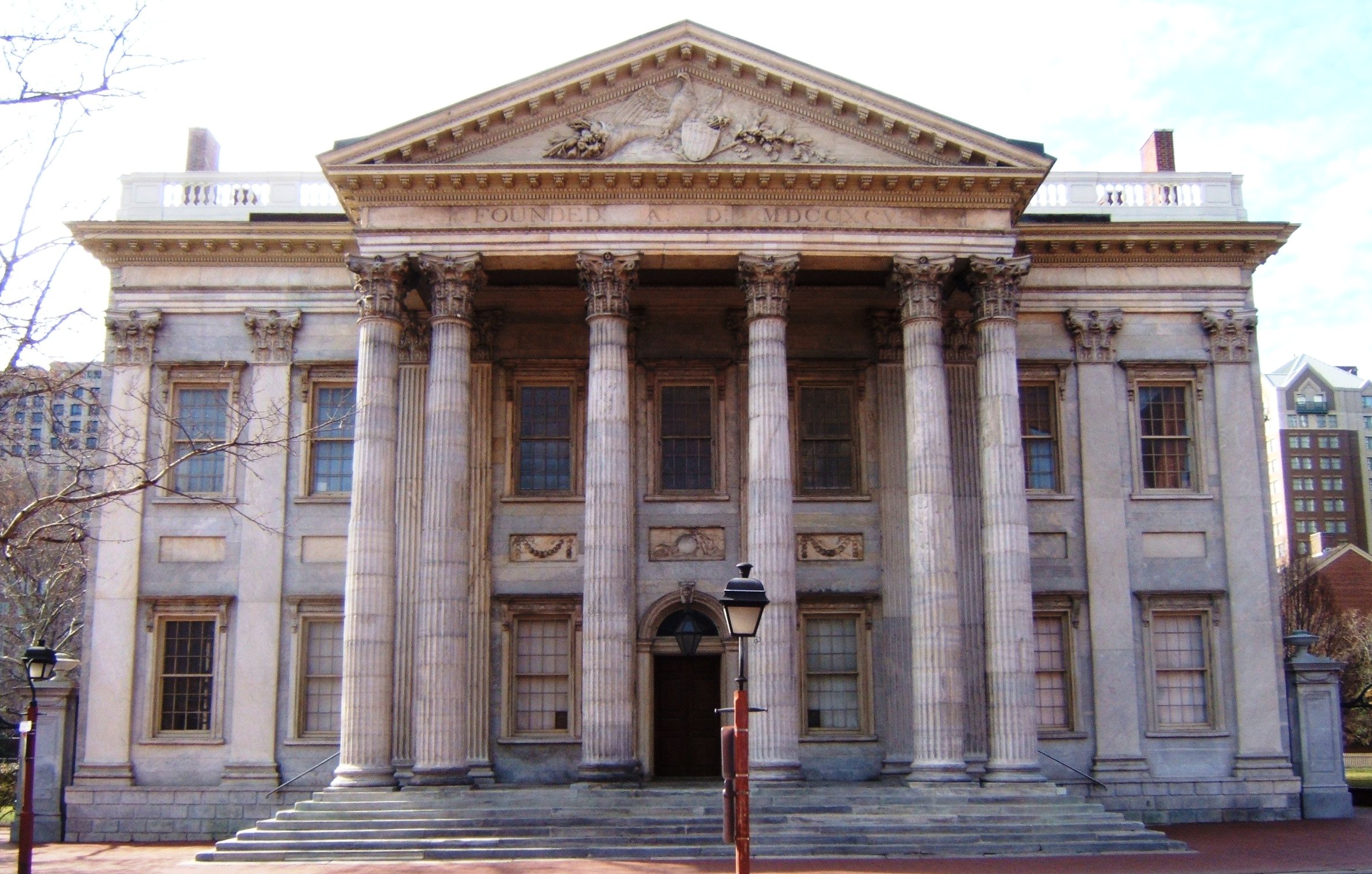|
Substitute Check
A substitute check or cheque, also called an image cash letter (ICL), clearing replacement document (CRD), or image replacement document (IRD), is a negotiable instrument used in electronic banking systems to represent a physical paper cheque (check). It may be wholly digital from payment initiation to clearing and settlement or it may be a digital reproduction ( truncation) of an original paper check. Standards and formats Software Software consists of computer programs that instruct the Execution (computing), execution of a computer. Software also includes design documents and specifications. The history of software is closely tied to the development of digital comput ... providers have developed "Virtual Check 21" standards within electronic banking systems which allows creation and submission of demand draft documents to the bank of deposit. Standards may include: * Remotely created checks (RCC) * X9.37 files Geographical significance United States The begi ... [...More Info...] [...Related Items...] OR: [Wikipedia] [Google] [Baidu] |
Negotiable Instrument
A negotiable instrument is a document guaranteeing the payment of a specific amount of money, either on demand, or at a set time, whose payer is usually named on the document. More specifically, it is a document contemplated by or consisting of a contract, which promises the payment of money without condition, which may be paid either on demand or at a future date. The term has different meanings, depending on its use in the application of different laws and depending on countries and contexts. The word "negotiable" refers to transferability, and " instrument" refers to a document giving legal effect by the virtue of the law. Concept of negotiability William Searle Holdsworth defines the concept of negotiability as follows: #Negotiable instruments are transferable under the following circumstances: they are transferable by delivery where they are made payable to the bearer, they are transferable by delivery and endorsement where they are made payable to order. #Consideration is p ... [...More Info...] [...Related Items...] OR: [Wikipedia] [Google] [Baidu] |
Cheque
A cheque (or check in American English) is a document that orders a bank, building society, or credit union, to pay a specific amount of money from a person's account to the person in whose name the cheque has been issued. The person writing the cheque, known as the ''drawer'', has a transaction banking account (often called a current, cheque, chequing, checking, or share draft account) where the money is held. The drawer writes various details including the monetary amount, date, and a payee on the cheque, and signs it, ordering their bank, known as the ''drawee'', to pay the amount of money stated to the payee. Although forms of cheques have been in use since ancient times and at least since the 9th century, they became a highly popular non-cash method for making payments during the 20th century and usage of cheques peaked. By the second half of the 20th century, as cheque processing became automated, billions of cheques were issued annually; these volumes peaked in or a ... [...More Info...] [...Related Items...] OR: [Wikipedia] [Google] [Baidu] |
Clearing (finance)
In banking and finance, clearing refers to all activities from the time a commitment is made for a transaction until it is settled. This process turns the promise of payment (for example, in the form of a cheque or electronic payment request) into the actual movement of money from one account to another. Clearing houses were formed to facilitate such transactions among banks. Description In trading, clearing is necessary because the speed of trades is much faster than the cycle time for completing the underlying transaction. It involves the management of post-trading, pre-settlement credit exposures to ensure that trades are settled in accordance with market rules, even if a buyer or seller should become insolvent prior to settlement. Processes included in clearing are reporting/monitoring, risk margining, netting of trades to single positions, tax handling, and failure handling. Systemically important payment systems (SIPS) are payment systems which have the characteristic ... [...More Info...] [...Related Items...] OR: [Wikipedia] [Google] [Baidu] |
Cheque Truncation
Cheque truncation (check truncation in American English) is a cheque clearance system that involves the digitization of a physical paper cheque into a substitute electronic form for transmission to the paying bank. The process of cheque clearance, involving data matching and verification, is done using digital images instead of paper copies. Cheque truncation reduces or eliminates the physical movement of paper cheques and reduces the time and cost of cheque clearance. Cheque truncation also offers the potential reduction in settlement periods with the electronic processing of the cheque payment system. History For cheque clearance, a cheque has to be presented to the drawee bank for payment. Originally, this was done by taking the cheque to the drawee bank, but as cheque usage increased, this became cumbersome and banks arranged to meet each day at a central location to exchange cheques and receive payment in money. This became known as central clearing. Bank customers who r ... [...More Info...] [...Related Items...] OR: [Wikipedia] [Google] [Baidu] |
Software
Software consists of computer programs that instruct the Execution (computing), execution of a computer. Software also includes design documents and specifications. The history of software is closely tied to the development of digital computers in the mid-20th century. Early programs were written in the machine language specific to the hardware. The introduction of high-level programming languages in 1958 allowed for more human-readable instructions, making software development easier and more portable across different computer architectures. Software in a programming language is run through a compiler or Interpreter (computing), interpreter to execution (computing), execute on the architecture's hardware. Over time, software has become complex, owing to developments in Computer network, networking, operating systems, and databases. Software can generally be categorized into two main types: # operating systems, which manage hardware resources and provide services for applicat ... [...More Info...] [...Related Items...] OR: [Wikipedia] [Google] [Baidu] |
Demand Draft
A demand draft (DD) is a negotiable instrument similar to a bill of exchange. A bank issues a demand draft to a client (drawer), directing another bank (drawee) or one of its own branches to pay a certain sum to the specified party (payee). A demand draft can also be compared to a cheque. However, demand drafts are difficult to countermand or revoke. Cheques can also be made payable to the bearer. However, demand drafts can only be made payable to a specified party, also known as pay-to-order. Demand drafts are usually orders of payment by a bank to another bank, whereas cheques are orders of payment from an account holder to the bank. A Drawer has to visit the branch of the Bank and fill the demand draft form and pay the amount either by cash or any other mode, and Bank will issue a demand draft. A demand draft has a validity of three months from the date of issuance of the demand draft. For instance, when enrolling in a college, an admission fee is required which can be paid t ... [...More Info...] [...Related Items...] OR: [Wikipedia] [Google] [Baidu] |
Check 21 Act
The Check Clearing for the 21st Century Act (or Check 21 Act) is a United States federal law, , that was enacted on October 28, 2003 by the 108th U.S. Congress. The Check 21 Act took effect one year later on October 28, 2004. The law allows the recipient of a paper check to create a digital version of the original, a process known as check truncation, into an electronic format called a "substitute check", thereby eliminating the need for further handling of the physical document. The recipient bank no longer returns the paper check but electronically transmits an image of both sides of the check to the bank it is drawn upon. Consumers are most likely to see the effects of this act when they notice that certain checks (or images thereof) are no longer being returned to them with their monthly statement, even though other checks are still being returned. Another effect of the law is that it is now legal for anyone to use a computer scanner or mobile phone to capture images of ... [...More Info...] [...Related Items...] OR: [Wikipedia] [Google] [Baidu] |
Remote Deposit
Remote deposit or mobile deposit is the ability of a bank customer to deposit a cheque into a bank account from a remote location, without having to physically deliver the cheque to the bank. This was originally accomplished by scanning a digital image of a cheque into a computer then transmitting that image to the bank, but is now accomplished with a smartphone. The practice became legal in the United States in 2004 when the '' Check Clearing for the 21st Century Act'' (Check 21 Act) took effect, though banks are not required to implement the system. This service was originally used primarily by businesses with dedicated check scanners, but with the spread of smartphones and mobile banking it is now common in consumer banks. History Remote deposits became legal in the United States in 2004 when the ''Check Clearing for the 21st Century Act'' (or Check 21 Act) went into effect. The Act is intended in part to keep the country's financial services operational in the event of ... [...More Info...] [...Related Items...] OR: [Wikipedia] [Google] [Baidu] |
Banking In The United States
In the United States, banking had begun by the 1780s, along with the country's founding. It has developed into a highly influential and complex system of banking and financial services. Anchored by New York City and Wall Street, it is centered on various financial services, such as private banking, asset management, and deposit security. The beginnings of the banking industry can be traced to 1780 when the Bank of Pennsylvania was founded to fund the American Revolutionary War. After merchants in the Thirteen Colonies needed a currency as a medium of exchange, the Bank of North America was opened to facilitate more advanced financial transactions. As of 2018, the largest banks in the United States were JPMorgan Chase, Bank of America, Wells Fargo, Citigroup, and Goldman Sachs. As of March 2024, there were 4,587 FDIC insured commercial banks and savings institutions in the U.S. History Merchants traveled from Britain to the United States and established the Bank of Pennsyl ... [...More Info...] [...Related Items...] OR: [Wikipedia] [Google] [Baidu] |
Federal Reserve System
The Federal Reserve System (often shortened to the Federal Reserve, or simply the Fed) is the central banking system of the United States. It was created on December 23, 1913, with the enactment of the Federal Reserve Act, after a series of financial panics (particularly the panic of 1907) led to the desire for central control of the monetary system in order to alleviate financial crises. Although an instrument of the U.S. government, the Federal Reserve System considers itself "an independent central bank because its monetary policy decisions do not have to be approved by the president or by anyone else in the executive or legislative branches of government, it does not receive funding appropriated by Congress, and the terms of the members of the board of governors span multiple presidential and congressional terms." Over the years, events such as the Great Depression in the 1930s and the Great Recession during the 2000s have led to the expansion of the roles and responsibi ... [...More Info...] [...Related Items...] OR: [Wikipedia] [Google] [Baidu] |
Cheques
A cheque (or check in American English) is a document that orders a bank, building society, or credit union, to pay a specific amount of money from a person's account to the person in whose name the cheque has been issued. The person writing the cheque, known as the ''drawer'', has a transaction banking account (often called a current, cheque, chequing, checking, or share draft account) where the money is held. The drawer writes various details including the monetary amount, date, and a payee on the cheque, and signs it, ordering their bank, known as the ''drawee'', to pay the amount of money stated to the payee. Although forms of cheques have been in use since ancient times and at least since the 9th century, they became a highly popular non-cash method for making payments during the 20th century and usage of cheques peaked. By the second half of the 20th century, as cheque processing became automated, billions of cheques were issued annually; these volumes peaked in or a ... [...More Info...] [...Related Items...] OR: [Wikipedia] [Google] [Baidu] |





